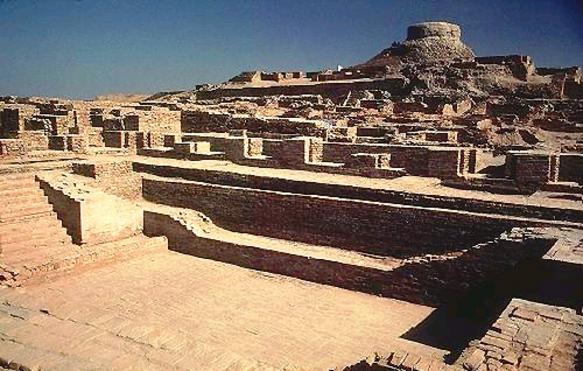Great Bath Of Mohenjedaro on:
[Wikipedia]
[Google]
[Amazon]
 The Great Bath is one of the best-known structures among the ruins of the Harappan Civilization excavated at Mohenjo-daro in
The Great Bath is one of the best-known structures among the ruins of the Harappan Civilization excavated at Mohenjo-daro in
" Encyclopædia Britannica Online. Retrieved 9 June 2010. Archaeological evidence indicates that the Great Bath was built in the third millennium BCE, soon after the raising of the "citadel" mound on which it is located.
29
outlet and corbelled drain.
8 of 90
File:The Great Bath at Mohenjo-daro. Wellcome L0005461.jpg, During 1922-1927 archaeological excavations
File:The_Great_Bath_of_Moenjodaro.jpg, Explanatory sign
File:Mohenjo-daro.jpg, General view
File:Great Bath, Mohenjo-daro 20160806 JYN-03.jpg, View of tank with both staircases
File:The Great Bath of Moenjodaro by smn121-5.JPG, Staircase
File:The Great Bath of Moenjodaro by smn121-6.JPG, Masonry detail
Mohenjo-daro!
', 103 slides. See "Great Bath, SD Area", slide
and
Around the Indus in 90 Slides
'
and slide
89
12
1995–2022. Accessed 2 July 2012, re-accessed 11 July 2022.
 The Great Bath is one of the best-known structures among the ruins of the Harappan Civilization excavated at Mohenjo-daro in
The Great Bath is one of the best-known structures among the ruins of the Harappan Civilization excavated at Mohenjo-daro in Sindh
Sindh (; ; ur, , ; historically romanized as Sind) is one of the four provinces of Pakistan. Located in the southeastern region of the country, Sindh is the third-largest province of Pakistan by land area and the second-largest province ...
, Pakistan.Great Bath" Encyclopædia Britannica Online. Retrieved 9 June 2010. Archaeological evidence indicates that the Great Bath was built in the third millennium BCE, soon after the raising of the "citadel" mound on which it is located.
Features
The Great Bath of Mohenjo-Daro is called the "earliest public water tank of the ancient world". It measures approximately by , with a maximum depth of . Two wide staircases, one from the north and one from the south, served as the entry to the structure. A ledge high extending the entire width of the bath is at the lower ends of these stairs. The sloping floor leads to a small outlet at the southwestern corner of the tank, connecting corbelled arch drain, which led the used water out of the bath.Kenoyer, slide29
outlet and corbelled drain.
bitumen
Asphalt, also known as bitumen (, ), is a sticky, black, highly viscous liquid or semi-solid form of petroleum. It may be found in natural deposits or may be a refined product, and is classed as a pitch. Before the 20th century, the term a ...
(waterproof tar) was laid along the sides of the pool and presumably also on the floor. Brick colonnades were discovered on the eastern, northern and southern edges. The preserved columns had stepped edges that may have held wooden screens or window frames. Two large doors lead into the complex from the south and other access was from the north and east. A series of rooms were located along the eastern edge of the building and in one room was a well that may have supplied some of the water needed to fill the tank. Rainwater also may have been collected for the purpose, but no inlet drains have been found. It may have had a long bathing pool built with waterproof bricks.Kenoyer, slid8 of 90
"Most scholars agree that this tank would have been used for special religious functions where water was used to purify and renew the well being of the bathers.This indicates the importance attached to ceremonial bathing in sacred tanks, pools and rivers since time immemorial." J. M. Kenoyer
College of Priests
Across the street of The Great Bath, there was a large building with several rooms and three verandas, and two staircases leading to the roof and upper floor. Considering the size and proximity to the Great Bath, this building is tentatively termed as the House of Priests and labelled as "College of Priests".Gallery
References
Bibliography
* Kenoyer, Jonathan Mark. Two sets of indexed images:Mohenjo-daro!
', 103 slides. See "Great Bath, SD Area", slide
and
Around the Indus in 90 Slides
'
and slide
8
12
1995–2022. Accessed 2 July 2012, re-accessed 11 July 2022.
External links
{{DEFAULTSORT:Great Bath, Mohenjo-Daro 1926 archaeological discoveries Archaeological sites in Sindh Bathing Buildings and structures completed in the 26th century BC Indus Valley civilisation sites Public baths